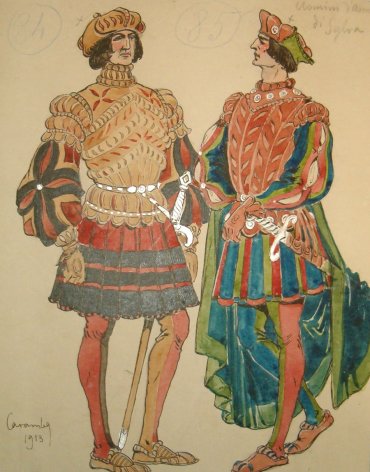‹ Essays ›
Verdi in the spirit of the time
in Giuseppe Verdi and the Arts, exhibition catalogue edited by Paola Zatti.
Section on sets and costumes edited by Vittoria Crespi Morbio.
Catalogue Electa
Milan, Galleria d’Arte Moderna
6 December 2013–23 February 2014
In this room we have a selection of sketches and costumes that range from the oldest documents concerning the staging at La Scala of the revival of Nabucco with the fashion plates by Filippo Peroni (1855) up to the 20th century.
Each work of Verdi’s is characterised by a sound “tint” expressed by a visual “tint”: the music creates an atmosphere which determines the historic, geographic and psychological features of the opera. Set designer and costume designer connect with this “tint”.
The tour aims at documenting the relationship which in the course of time arose between artists and Verdi’s operas: a fascinating dialectic that mediates the intrinsic requirements of the opera with the artist’s aesthetic and cultural background.
In this way Caramba’s Ernani, while observing the historical period of the work, is steeped in the bright colours and poster-style linearity of the early 20th-century; Lila de Nobili’s Aida is characterised by the nostalgic recollection of Orientalism in Second-Empire France; while Piero Zuffi’s Egypt is built with an austere taste indebted to design in the Fifties. The tour ends with a brilliant staging of Falstaff: Ezio Frigerio sets Verdi’s last masterpiece in Verdi’s homeland, the plains of the Po, with its farmhouses, its corn sheaves, its atmosphere full of longing: favourite themes of Seventies’ films, from Olmi to Bertolucci.
› Categoria: ‹ contributions › ‹ Essays ›
